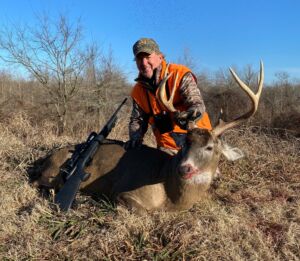 Before Louisiana was colonized by the French in 1803, the area’s whitetail population was about 400,000. As the 19th century wore on, market hunting and the damaging effects of large-scale timber cutting reduced the herds. Hunting laws and bag limits were too liberal or not enforced, and deer numbers fell dramatically. During the early 1900s, Louisiana’s deer population had dropped to about 20,000 animals.
Before Louisiana was colonized by the French in 1803, the area’s whitetail population was about 400,000. As the 19th century wore on, market hunting and the damaging effects of large-scale timber cutting reduced the herds. Hunting laws and bag limits were too liberal or not enforced, and deer numbers fell dramatically. During the early 1900s, Louisiana’s deer population had dropped to about 20,000 animals.
But during the tough times, some does and bucks survived in the deep swamps and thickets. As deforested habitats grew into second-growth timber, the whitetail population began to recover.
The Louisiana Department of Wildlife and Fisheries began managing the herds in the late 1940s. Officials set seasons and bag limits. By the early 1950s, managers had built a solid restocking program: deer were captured on public and private lands across the state, and some does and bucks were imported from Texas and Wisconsin. Deer were restocked into 42 parishes.
Interestingly, in the 1960s, hunters began talking about seeing large, pale animals which they called “Blue Deer.” They were believed to be the Wisconsin transplants, or their offspring. But biologists disagreed and pointed out that the deer trapped in Louisiana were, on average, larger than the ones acquired from Wisconsin. Over time, turn outs most of the successful restocking efforts were due to the in-state transplants. Recent DNA analysis of Louisiana deer shows no remnant genetics from northern lineages.
Today, Louisiana’s whitetail population is estimated at 500,000 strong, with animals scattered across 10 varied habitat in the state. Many Louisiana hunters still see and talk about Blue Deer.
Photo: Hanback with a mature Louisiana 8-point (just a hint of blue hide).





